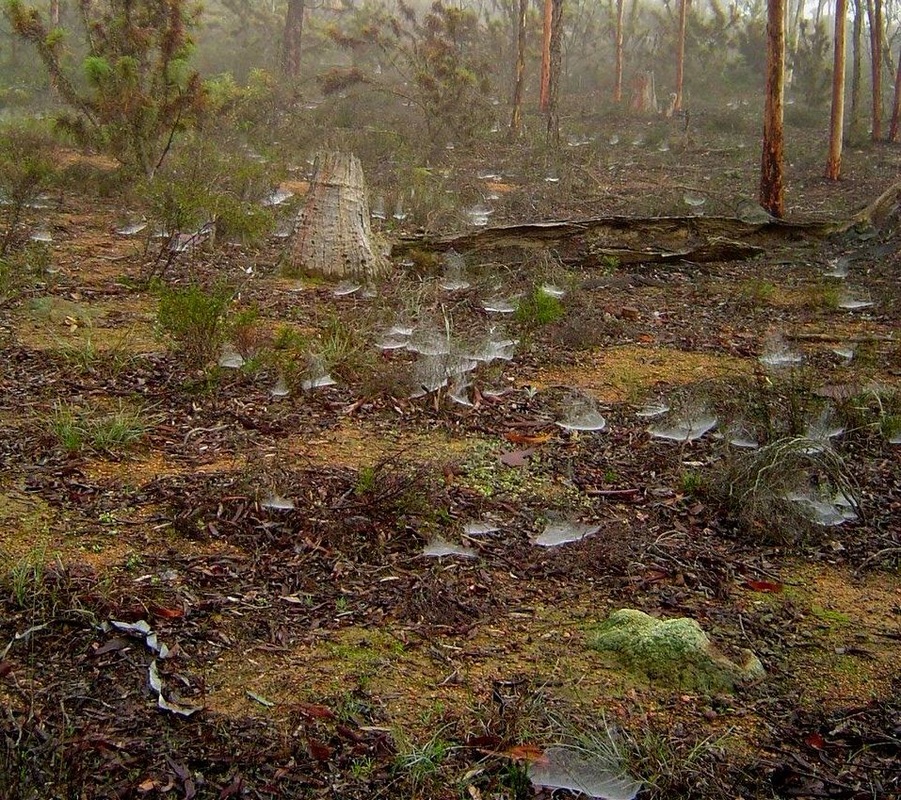Kleptoparasitic spiders are tiny Argyrodes genus (tangle web group) spiders that live in larger spider webs and steal from them. They do this this by creeping up and feeding on wrapped prey along with the host, taking prey too small for the host, or by eating the host’s web. Occasionally they even attack their host.
This week for the first time I saw a golden orb weaver Nephila edulis in its golden web above and spanning a driving track in Foxes Lair. At great risk I erected my largest ladder on the ute tray and teetered on the top rung to get the image below. Sure enough, the 5cm beauty was accompanied by a tiny speck Argyrodes antipodianus the kleptoparasitic Dewdrop Spider.
 Male spider with spoon-shaped palps
Male spider with spoon-shaped palps When Alan Kerrigan and I were on a kleptoparasite photo shoot an insect flew into an adjoining sedge web and was quickly wrapped up by the resident spider. On examining Alan’s images of this later, I was surprised to see that the spider was quite different to that in the adjoining plant. It was a Theriidae family, Archaerena species tangle web spider) and the little one was its male mate.
The poor little fellow is likely to be his wife’s dinner whether or not he can do the deed. Even then the deed itself appears to be less than exciting! If you look at the image on the left, you can see that the male has spoon-shaped ends on his palps (short for pedipalps or short front leg-like things) that he fills with sperm and transfers to the female’s genital opening.






